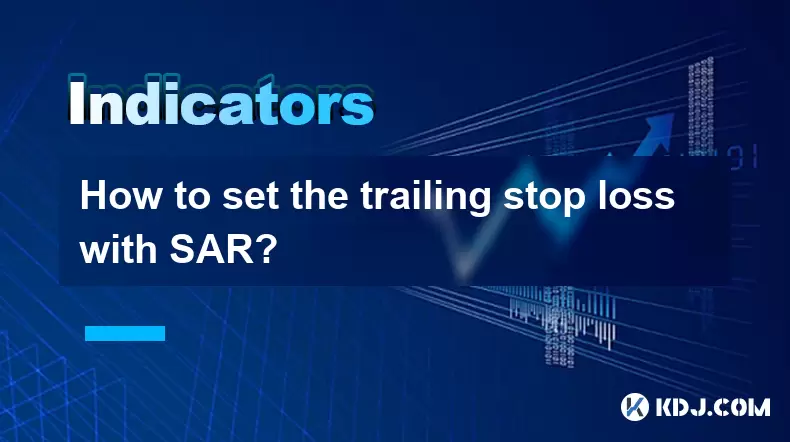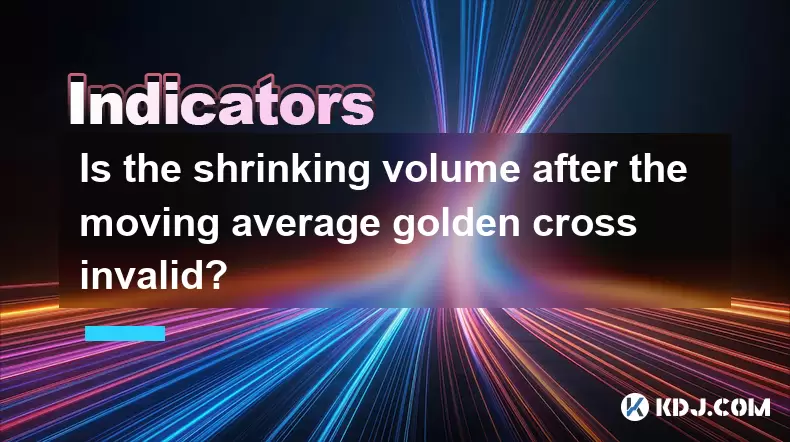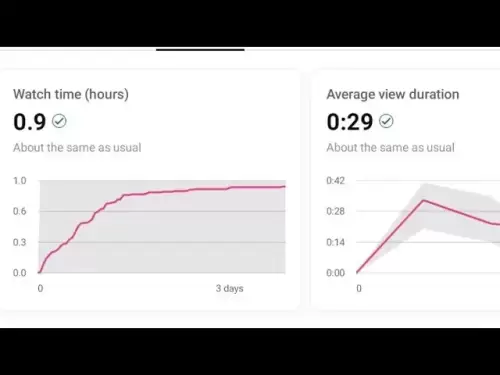-
 Bitcoin
Bitcoin $103,456.1111
0.49% -
 Ethereum
Ethereum $2,414.9631
0.02% -
 Tether USDt
Tether USDt $1.0006
0.05% -
 XRP
XRP $2.1083
0.24% -
 BNB
BNB $634.8760
-0.76% -
 Solana
Solana $139.8437
1.94% -
 USDC
USDC $0.9998
-0.01% -
 TRON
TRON $0.2737
0.97% -
 Dogecoin
Dogecoin $0.1602
0.20% -
 Cardano
Cardano $0.5737
1.08% -
 Hyperliquid
Hyperliquid $32.9779
-2.54% -
 Bitcoin Cash
Bitcoin Cash $474.8886
-1.80% -
 Sui
Sui $2.6272
-1.99% -
 Chainlink
Chainlink $12.4878
0.14% -
 UNUS SED LEO
UNUS SED LEO $8.9234
0.35% -
 Stellar
Stellar $0.2411
-0.18% -
 Avalanche
Avalanche $17.0274
-0.70% -
 Toncoin
Toncoin $2.8936
-1.11% -
 Shiba Inu
Shiba Inu $0.0...01112
-0.58% -
 Litecoin
Litecoin $82.6982
1.33% -
 Hedera
Hedera $0.1423
-0.05% -
 Monero
Monero $314.8455
3.26% -
 Ethena USDe
Ethena USDe $1.0006
0.01% -
 Polkadot
Polkadot $3.4043
1.14% -
 Dai
Dai $0.9999
0.01% -
 Bitget Token
Bitget Token $4.2848
-0.13% -
 Uniswap
Uniswap $6.8748
-5.45% -
 Pepe
Pepe $0.0...09661
0.52% -
 Pi
Pi $0.5359
1.19% -
 Aave
Aave $242.9168
-1.03%
How to set the trailing stop loss with SAR?
Combining SAR with a trailing stop loss helps crypto traders lock in profits as prices move favorably, enhancing risk management in volatile markets.
May 27, 2025 at 10:01 pm

Understanding Trailing Stop Loss and SAR
A trailing stop loss is a dynamic order that traders use to protect gains by allowing a trade to remain open and continue to profit as long as the price is moving in the trader's favor. Once the price changes direction by a certain percentage or amount, the stop loss is triggered, and the trade is closed to preserve the profits. On the other hand, SAR (Stop and Reverse), also known as Parabolic SAR, is a technical indicator used to determine the potential reversals in the price direction of an asset. It is visually represented as a series of dots placed either above or below the price on a chart, indicating potential entry and exit points.
Why Combine Trailing Stop Loss with SAR?
Combining a trailing stop loss with the SAR indicator can be a powerful strategy for cryptocurrency traders. The SAR indicator helps in identifying the momentum and trend direction, while the trailing stop loss ensures that profits are locked in as the price moves favorably. This combination can enhance a trader's ability to manage risk and maximize returns in the volatile cryptocurrency markets.
Setting Up the SAR Indicator
Before you can set a trailing stop loss using the SAR, you need to set up the SAR indicator on your trading chart. Here's how you can do it on most trading platforms:
- Open your trading platform and select the cryptocurrency pair you wish to trade.
- Navigate to the indicators section and search for the Parabolic SAR.
- Add the Parabolic SAR to your chart. You may need to adjust the settings such as the acceleration factor and the maximum value to suit your trading style.
Once the SAR indicator is set up, you will see a series of dots on your chart that will help you determine the trend direction.
Calculating the Trailing Stop Loss Based on SAR
To set a trailing stop loss using the SAR indicator, you need to understand how the SAR values are calculated and how they can be used to set your stop loss levels. The SAR values change over time based on the asset's price movement. Here's how you can calculate your trailing stop loss:
- Identify the current SAR value on your chart. This value will act as your initial stop loss level.
- As the price moves in your favor, the SAR value will also move, creating a new stop loss level.
- Set your trailing stop loss to trigger when the price hits the current SAR value. This ensures that your stop loss moves with the price, locking in profits as the trend continues.
Implementing the Trailing Stop Loss with SAR on a Trading Platform
Here’s how you can implement a trailing stop loss using the SAR indicator on a typical trading platform:
- After setting up the SAR indicator, place a buy or sell order based on the SAR signals.
- Once the trade is open, go to the order management section and look for the option to set a trailing stop loss.
- Enter the current SAR value as your initial stop loss level. Ensure that the trailing stop loss is set to adjust automatically based on the SAR values.
- Monitor the trade and adjust the trailing stop loss manually if the platform does not support automatic adjustments based on the SAR indicator.
Practical Example of Using Trailing Stop Loss with SAR
Let's consider a practical example of using a trailing stop loss with the SAR indicator for trading Bitcoin (BTC).
- Assume the current price of BTC is $50,000, and the SAR indicator shows a value of $49,000.
- You decide to buy BTC at $50,000 and set your initial trailing stop loss at $49,000 based on the SAR value.
- As the price of BTC rises to $52,000, the SAR value moves up to $51,000.
- Your trailing stop loss automatically adjusts to $51,000, locking in a potential profit.
- If the price of BTC then drops to $51,000, your trailing stop loss is triggered, and the trade is closed, securing your profits.
Adjusting the SAR Parameters for Optimal Performance
The effectiveness of using SAR with a trailing stop loss can be influenced by the SAR parameters. Here's how you can adjust them:
- The acceleration factor determines how quickly the SAR values change. A higher acceleration factor will make the SAR values move faster, which can be useful in fast-moving markets but may result in more false signals.
- The maximum value limits how far the acceleration factor can increase. Adjusting this can help in controlling the sensitivity of the SAR indicator.
- Experiment with different settings to find the optimal balance between sensitivity and accuracy for your trading strategy.
Common Pitfalls and How to Avoid Them
While using the SAR indicator with a trailing stop loss can be effective, there are common pitfalls to watch out for:
- False signals can occur, especially in choppy markets. Always use additional indicators to confirm the SAR signals.
- Over-reliance on the SAR indicator can lead to missed opportunities. Use it as part of a broader trading strategy.
- Improper settings can result in premature exits or missed profits. Regularly review and adjust the SAR parameters based on market conditions.
Frequently Asked Questions
Q: Can I use the SAR indicator for all cryptocurrencies?
A: The SAR indicator can be applied to any cryptocurrency, but its effectiveness may vary depending on the specific market conditions and volatility of the asset. It is best to test the indicator on historical data for the cryptocurrency you are interested in trading.
Q: How often should I adjust the SAR parameters?
A: The frequency of adjusting SAR parameters depends on the market conditions and your trading strategy. In highly volatile markets, you might need to adjust the parameters more frequently, while in more stable markets, less frequent adjustments might be sufficient.
Q: Is it necessary to use other indicators alongside the SAR for better results?
A: Yes, using other indicators such as moving averages, RSI, or MACD can help confirm the signals provided by the SAR indicator and improve the overall accuracy of your trading strategy.
Q: Can I automate the trailing stop loss based on the SAR indicator on all trading platforms?
A: Not all trading platforms support automatic adjustments of trailing stop losses based on the SAR indicator. You may need to manually adjust the trailing stop loss based on the SAR values if your platform does not offer this feature.
Disclaimer:info@kdj.com
The information provided is not trading advice. kdj.com does not assume any responsibility for any investments made based on the information provided in this article. Cryptocurrencies are highly volatile and it is highly recommended that you invest with caution after thorough research!
If you believe that the content used on this website infringes your copyright, please contact us immediately (info@kdj.com) and we will delete it promptly.
- Ruvi AI: The Audited Token Poised to Outshine Shiba Inu
- 2025-06-22 10:25:12
- Dypians, DeFi, and Sei Network: A Deep Dive into the Latest Trends
- 2025-06-22 10:25:12
- Hacken Security Breach Highlights Risks Across Ethereum and BSC
- 2025-06-22 08:25:12
- SHIB Price, Forecasts, Timelines: Will Shiba Inu Ever Reach the 'One-Cent Dream'?
- 2025-06-22 08:25:12
- Avalanche vs. Ruvi AI: Why Smart Money's on This Audited Token
- 2025-06-22 08:45:12
- Bitcoin Demand on Pause: What's Next for the Crypto King?
- 2025-06-22 08:45:12
Related knowledge

Does the second surge in the RSI overbought zone induce more?
Jun 22,2025 at 08:35am
Understanding the RSI Overbought ZoneThe Relative Strength Index (RSI) is a momentum oscillator commonly used in technical analysis to measure the speed and change of price movements. It ranges from 0 to 100, with values above 70 typically considered overbought and values below 30 considered oversold. When the RSI enters the overbought zone for the firs...

Does the sudden contraction of ATR indicate the end of the trend?
Jun 20,2025 at 11:14pm
Understanding ATR and Its Role in Technical AnalysisThe Average True Range (ATR) is a technical indicator used to measure market volatility. Developed by J. Welles Wilder, ATR calculates the average range of price movement over a specified period, typically 14 periods. It does not indicate direction—only volatility. Traders use ATR to gauge how much an ...

Is it invalid if the DMI crosses but the ADX does not expand?
Jun 21,2025 at 09:35am
Understanding the DMI and ADX RelationshipIn technical analysis, the Directional Movement Index (DMI) consists of two lines: +DI (Positive Directional Indicator) and -DI (Negative Directional Indicator). These indicators are used to determine the direction of a trend. When +DI crosses above -DI, it is often interpreted as a bullish signal, while the opp...

How to filter false signals when the SAR indicator frequently flips?
Jun 21,2025 at 08:43pm
Understanding the SAR Indicator and Its BehaviorThe SAR (Stop and Reverse) indicator is a popular technical analysis tool used in cryptocurrency trading to identify potential reversals in price movement. It appears as a series of dots placed either above or below the price chart, signaling bullish or bearish trends. When the dots are below the price, it...

Is the trend continuation when the Williams indicator is oversold but there is no rebound?
Jun 20,2025 at 11:42pm
Understanding the Williams %R IndicatorThe Williams %R indicator, also known as the Williams Percent Range, is a momentum oscillator used in technical analysis to identify overbought and oversold levels in price movements. It typically ranges from 0 to -100, where values above -20 are considered overbought and values below -80 are considered oversold. T...

Is the shrinking volume after the moving average golden cross invalid?
Jun 22,2025 at 10:42am
Understanding the Moving Average Golden Cross in CryptocurrencyIn the world of cryptocurrency trading, technical indicators play a crucial role in decision-making. One such indicator is the moving average golden cross, which occurs when a short-term moving average crosses above a long-term moving average, typically signaling a bullish trend. This event ...

Does the second surge in the RSI overbought zone induce more?
Jun 22,2025 at 08:35am
Understanding the RSI Overbought ZoneThe Relative Strength Index (RSI) is a momentum oscillator commonly used in technical analysis to measure the speed and change of price movements. It ranges from 0 to 100, with values above 70 typically considered overbought and values below 30 considered oversold. When the RSI enters the overbought zone for the firs...

Does the sudden contraction of ATR indicate the end of the trend?
Jun 20,2025 at 11:14pm
Understanding ATR and Its Role in Technical AnalysisThe Average True Range (ATR) is a technical indicator used to measure market volatility. Developed by J. Welles Wilder, ATR calculates the average range of price movement over a specified period, typically 14 periods. It does not indicate direction—only volatility. Traders use ATR to gauge how much an ...

Is it invalid if the DMI crosses but the ADX does not expand?
Jun 21,2025 at 09:35am
Understanding the DMI and ADX RelationshipIn technical analysis, the Directional Movement Index (DMI) consists of two lines: +DI (Positive Directional Indicator) and -DI (Negative Directional Indicator). These indicators are used to determine the direction of a trend. When +DI crosses above -DI, it is often interpreted as a bullish signal, while the opp...

How to filter false signals when the SAR indicator frequently flips?
Jun 21,2025 at 08:43pm
Understanding the SAR Indicator and Its BehaviorThe SAR (Stop and Reverse) indicator is a popular technical analysis tool used in cryptocurrency trading to identify potential reversals in price movement. It appears as a series of dots placed either above or below the price chart, signaling bullish or bearish trends. When the dots are below the price, it...

Is the trend continuation when the Williams indicator is oversold but there is no rebound?
Jun 20,2025 at 11:42pm
Understanding the Williams %R IndicatorThe Williams %R indicator, also known as the Williams Percent Range, is a momentum oscillator used in technical analysis to identify overbought and oversold levels in price movements. It typically ranges from 0 to -100, where values above -20 are considered overbought and values below -80 are considered oversold. T...

Is the shrinking volume after the moving average golden cross invalid?
Jun 22,2025 at 10:42am
Understanding the Moving Average Golden Cross in CryptocurrencyIn the world of cryptocurrency trading, technical indicators play a crucial role in decision-making. One such indicator is the moving average golden cross, which occurs when a short-term moving average crosses above a long-term moving average, typically signaling a bullish trend. This event ...
See all articles
























































































